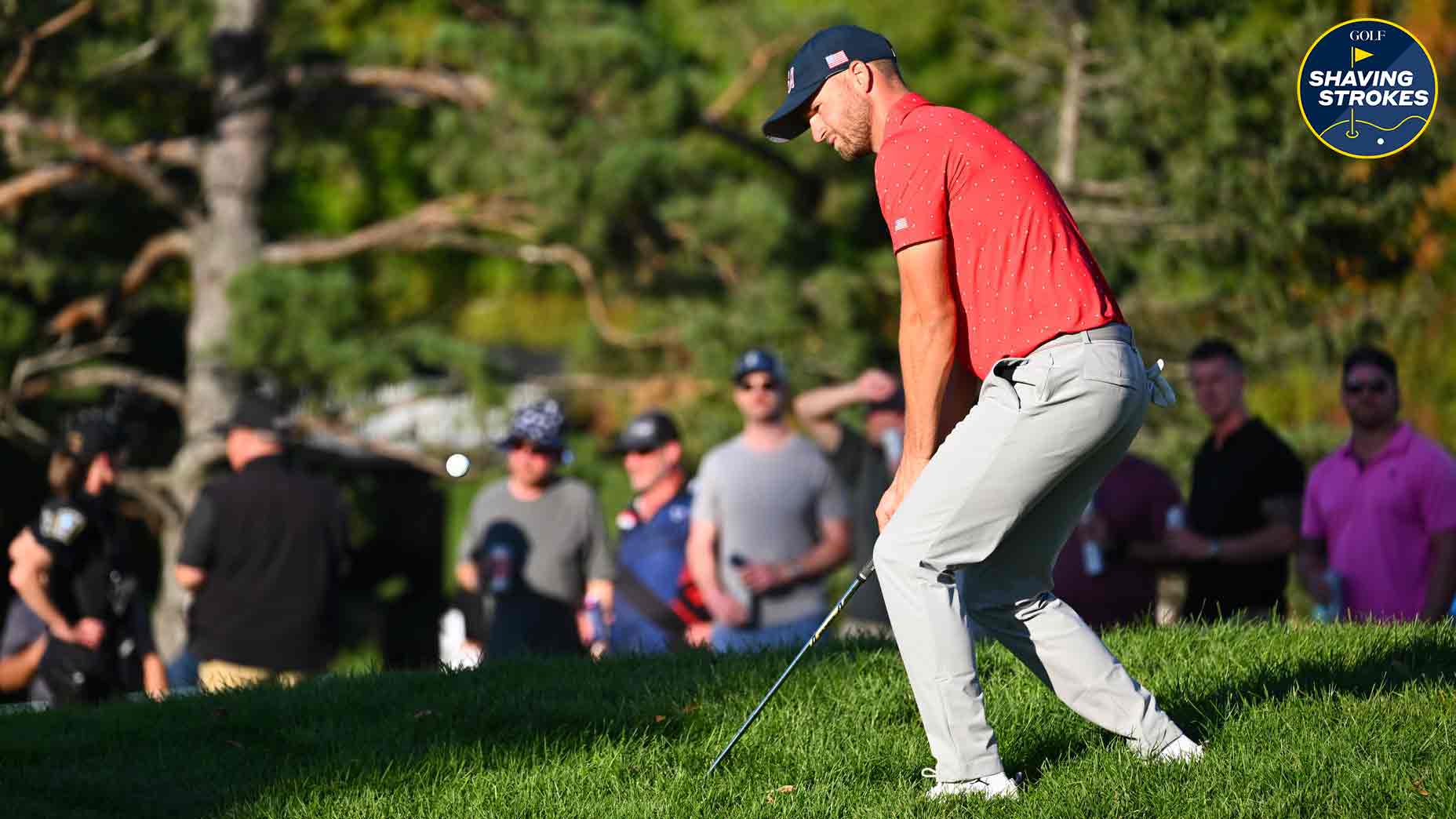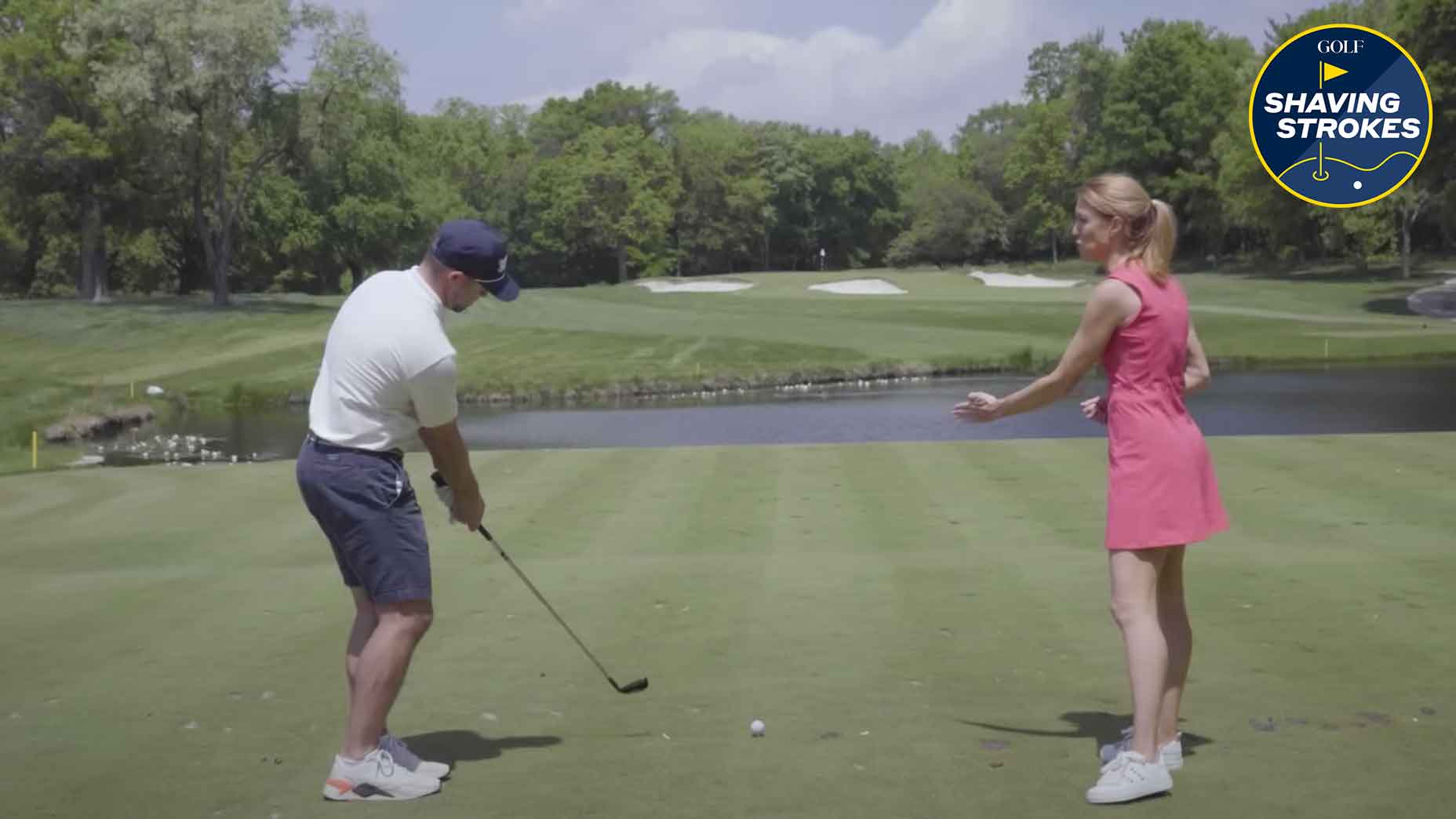2 simple chipping flaws are crushing your short game

If you’re inconsistent on chip shots, GOLF Top 100 Teacher Trent Wearner says two common errors could be the problem. Here’s how to fix them.
Getty Images
I’m not sure what’s been going on lately, but my short game continues to just cripple my scorecard — which is a common theme for other amateur golfers, too.
Over the past few months, I’ve been crushing the ball off the tee and have had above-average approach shots, but as soon as I get near the green, everything seems to fall apart.
Chunk here, skulled shot there, and don’t even get me started on how bad my distance control has been on pitch and chip shots.
As frustrating as it all is, I know there’s hope — since the quickest way to shave strokes is by dialing in the short game. But to fix an issue you need to identify where the problem starts, which is why I tapped GOLF Top 100 Teacher Trent Wearner to help.
So keep reading to see two common chipping flaws Wearner says he often sees with players — and some easy tips on how to fix both.
Avoid these mistakes when hitting a chip shot
“If you can chip well, it takes so much pressure off your iron game,” Wearner tells me. “While getting up and down is a two-part skill — one part chip and one part putt — it all starts with executing the ideal chip shot.”
However, he says too many mid-handicappers are nervous or just don’t know how to perform well because of bad habits.
“Many golfers are anxious over chips,” he adds. “It tends to stem from one setup item and one in-swing item — which are both easily fixable when you follow these tips.”
At setup, you’re standing too far from the ball
“When you’re standing too far away from the golf ball at address, it positions your hands too low, leaving the bottom of the wedge to sit up in the air,” Wearner explains. “The club shaft needs to be very vertical, so you’re going to stand much closer and taller at address.”
Wearner says a simple at-home drill can help dial in your setup position.
“An easy way to test your setup position is by using your hardwood floor at home,” Wearner says. “Simply set a wedge on the floor so you can see and feel what it takes to get the bottom of the club flat (or even with the heel slightly up) at address. If the toe’s up at all, the heel will commonly catch the grass at impact, which won’t allow the club to glide through the grass properly for good contact.”
You’re not turning your body
Another common issue that Wearner sees in the short game is one that amateurs often struggle with in the full-swing — not enough rotation in the body. But in the short game, it’s a different kind of turn.
“People just don’t turn their body enough through the downswing, through impact, and into the finish — especially in their hips and chest,” Wearner says. “Instead, their arms often swing down without a quality body pivot. This makes the club hit the ground before the ball, resulting in a chunked shot, and often leading the golfer to subconsciously pull their arms in, which causes bladed chip shots.”
Either blading or chunking your chip shots is no way to go through life, so Wearner suggests the following to improve your rotation in the short game for instant improvement.
“You should strive to turn your body open through impact, leaving the shaft of your club to finish fairly low, yet keeping your body open and tall at the finish,” he says. “When watching golf on TV, notice how open and tall Tour players’ bodies are at the finish position when hitting shorter shots.”
Divot Board
$99.99
Introducing the Divot Board, your ultimate golfing companion for immediate feedback and swing correction. This game-changing board reads your divots, providing real-time data on ball flight and helping you improve your technique. Experience the power of instant feedback and elevate your game with this portable and user-friendly device. Perfect for golfers of all levels. Get the Divot Board and take your golfing journey to new heights.
View Product
Related
5 Things I Never Play Golf Without: David Dusek
Our 11-handicap equipment writer always brings his favorite divot repair tool, a portable speaker and some high-tech gear to the course.As long as the weather i
Donald Trump’s golf course wrecked by pro-Palestine protesters
Pro-Palestinian protesters have vandalized parts of U.S. President Donald Trump's golf course in Scotland in response to his proposal for the reconstruction of
Man holding Palestinian flag scales London’s Big Ben hours after…
CNN — Emergency services were called to London’s Palace of Westminster on Saturday a
EPD: Drunk driver parked car on golf course
EVANSVILLE, Ind. (WFIE) - Evansville police say they arrested a man after finding him drunk in his car that was parked on a golf course.Officers say they were c















